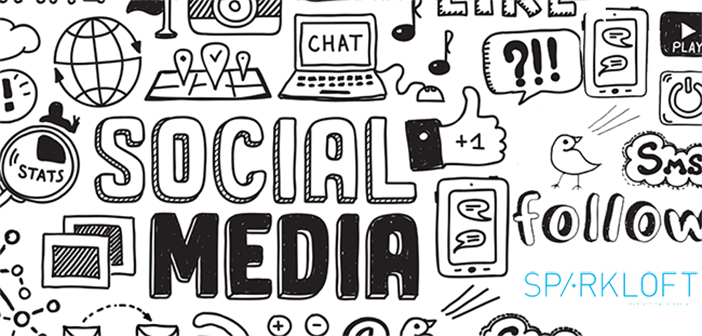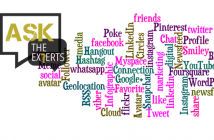If you run an aerial adventure business, chances are you have limited time to spend online. Between keeping guests happy and daily park upkeep, social media marketing probably isn’t front of mind. The good news is it doesn’t require a lot of time to maintain a strong social media presence that engages current customers and attracts new visitors. With these quick tips, you can knock your presence out of the park.
1. Facebook needs less, but more focused attention:
Facebook used to be king. But with huge declines in organic reach for brands and publishers, it’s better to diversify your approach—a little Facebook here, a little Instagram there, and sprinkle in some Twitter. On all platforms, don’t worry about posting multiple times a day. Once weekly is enough for Facebook. On Instagram and Twitter, which still have some organic reach, one post daily or just a few times per week is all you need. Remember, quality over quantity. If you don’t have the time, don’t launch the platform.
Exciting visuals are key for social. Of course, this works out well for aerial adventure parks and zip line tours. You are probably flush with high-octane and exciting “goosebumps” content. Stunning photos and videos highlighting the fun experience you provide will perform well and add value to your brand. Facebook’s new algorithm change actively prioritizes friends, so it’s important that you create posts encouraging people to tag, share, and comment.
However, to reach new customers on social today, you really have to fork over a little bit of cash.
2. Micro-advertise:
Facebook started putting what friends and families share at the top of users’ newsfeeds, as opposed to content from publishers and brands. In order to reach the most people, budgeting as little as $25 for a couple of posts will go a long way.
There are a lot of different approaches to do this. On Facebook and Instagram, you can expand your awareness using Custom Audiences, which works like this: You upload an existing customer list, and Facebook matches the people on your list. It’s simple, easy, and effective.
Another tactic is Local Awareness Ads, which will serve your ad to people when they’re near your business via geolocation. This makes a lot of sense when people have flexible trip schedules and are looking for the next off-the-beaten-path adventure.
Retargeting ads, while a little more complicated, are great tools too. After someone visits your website, they will be served your ad on Facebook. Retargeting is a great way to focus on customers who are truly interested—and willing to make a purchase. The key, of course, is to make sure you’ve got the right audience.
It does take a little time to get familiar with the ad products, but Facebook is making it easier and easier and does the optimizing for you.
3. Break up your audience:
You’ve heard this before, but it bears repeating: Knowing who you’re talking to is the key for successful marketing. On social media, this applies to both paid and organic posts. You want to target the right audience segment with the most relevant content. For instance, you should have different content for targeting young people looking for a quick weekend getaway than if you are targeting local parents. For both, you want to know a little bit more about their travel habits.
Facebook Audience Insights can show you all of this. You can see demographics of your page: age and gender, lifestyle, education, relationship status, job role, and household size. But you can also hone down into more behaviors, which tell the real story: where people live, how frequently they are on Facebook, what they buy, and what other pages they follow.
Twitter provides similar insights. You can get a glimpse into what profiles your followers also visit, the kind of content they like, what shows they like to watch, what music they listen to, what they buy, incomes, etc. This data shapes the type of content that will resonate best. Don’t post the same content to everyone. Nailing down your audience’s interests can also help identify your brand advocates.
4. Influencers: Think small—just a little bit famous:
An influencer on social media is someone with established credibility and an audience that listens. There are lots of influencers out there, and brands pay them to promote a product or service. GoPro probably shells out a lot of money for its influencers, but most businesses, including adventure parks, don’t have GoPro budgets—and that’s OK.
Micro is the new macro. Brands are thinking smaller when courting spokespeople on social media. With small- to medium-sized followings of 5,000 to 20,000, micro-influencers are budget friendly and, if approached with the right product, have weight with engaged, niche groups. Plus, since they are not yet a “big thing,” you are far less likely to run into issues of fake followers and complicated talent agency agreements.
When searching for micro-influencers, segment your searches. You can break up searches for families, Millennials, adventure-lovers, outdoor bloggers, etc. Searching by hashtags also helps. If you do find an influencer, it’s important to be up front and honest about your budget limitations and that you respect the value of his or her work to grow and engage their own audiences.
Some influencers will have payment expectations, but it is still possible to find an influencer who will promote your business to his or her followers in exchange for an experience at your park or tour. A little personalized attention or a custom tour can go a long way to showcase a unique experience that he or she wants to advocate. Influencers often travel with significant others who double as their photographers, so you should expect to extend the offer to their travel companions.
5. Instigate great stories that are easy for customers to share:
Don’t forget about your customers. They’re your best advocates. You want them to share.
Did you know that the “I Amsterdam” sign is one of the most Instagrammed landmarks in the world, garnering up to 8,000 pictures per day? And it’s not alone: Dallas did a similar installation when it wanted consumers to share its place as the new “big city” in the U.S. These tactics are simple and nothing new, but remain effective.
But before investing in a gigantic photo-op sign, there are smaller tactics to try. Some hotel chains instigate guests to take selfies in spots where the background highlights the property’s USP (unique selling point), such as proximity to major attractions, by creating floor decals that mark the best selfie spots. The key to instigating these stories is finding the spaces and moments in your park or tour that trigger the most talk. That’s where you need to make it easy to snap a photo and encourage folks to share. And the prompt must be in the moment.
Nothing can replace good old-fashioned, word-of-mouth-marketing. Activating your customers not only builds brand awareness, but also authenticity. People want to experience real thrills. It’s your job, especially now that Facebook is prioritizing friends and family content, to help them tell their story.
The first step is to clean up those two or three priority social channels (Facebook, Twitter and Instagram). Make sure these channels are prominent on the website, in emails, marketing, and in those top “storytelling” areas in the park. People might not remember your hashtags or social handles, so put up physical reminders. Add this signage to areas where people take the most pictures. Encourage your staff to remind customers to share on social, have them offer to take photos, and brief them on the right hashtags and channels to tag.
A little time and a small budget will go a long way in building a successful social media presence for your business—and the payoff can be huge.
Sparkloft Media, a social media agency, employs nearly 50 employees with headquarters in Portland, Ore., and additional offices in Atlanta, Ga., and Washington DC. The agency develops communities, programs and campaigns throughout the world for brands such as Alaska Airlines, Warner Bros Studio Tours, Microsoft, Brand USA, Travel Oregon, Crystal Cruises, and South Africa Tourism.






